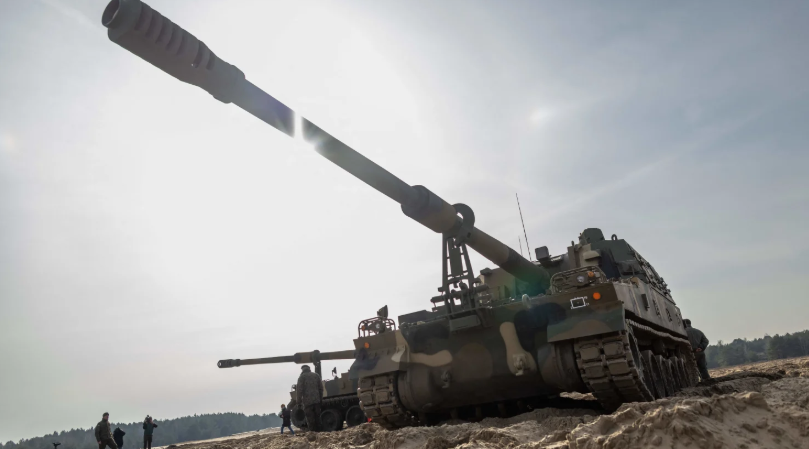South Korea is known for many things. K-pop, K-dramas and Korean food have made their way across the world.
Now, a new facet from South Korea is poised to make a splash in investors’ portfolios — defense stocks.
Shares of these military manufacturing firms have been surging this year, powered by massive arms orders from other nations.
Most of the leaders in this space, namely, Hanwha Aerospace, Korea Aerospace Industries, Hyundai Rotem and LIG Nex1, have recorded stellar gains so far this year.
Statistics from the Stockholm International Peace Research Institute showed that world military expenditures increased for the ninth consecutive year in 2023, up 6.8% year-over-year and reaching a total of $2.44 trillion. This was the steepest year-on-year rise since 2009, and pushed global spending to a record, the institute added.
Sang Hun Seok, who is an Indo-Pacific visiting fellow at the Royal United Services Institute, a U.K.-based policy think tank, explained to that a steady increase in global expenditure, combined with growing geopolitical uncertainties has provided South Korean arms makers with larger global markets.
Furthermore, more countries were importing defense products from Asia’s fourth largest economy. Chosun Ilbo said that just four countries were importing South Korean arms in 2022, but this number rose to 12 in 2023.
The first reason, of course, is cost. RUSI’s Seok said simply: “South Korean exports are highly cost-efficient.” For example, a PAC-3 intercept missile, used by the U.S. Patriot surface-to-air missile system, reportedly costs around $4 million each.
The South Korean Cheon-gong intercept missile, made by LIG Nex1, is known to offer similar performance to the PAC-3 and costs a third of that, he noted.
The prohibitive cost of such weapons has been brought into stark focus during the Russia-Ukraine war, when Moscow launched numerous drone and missile attacks against Ukraine, some strikes consisting of over 100 unmanned aerial vehicles.
A report from the Center for Strategic and International Studies in 2022 highlighted this disparity: “Shooting $4 million missiles at $250,000 Russian cruise missiles might be justified if those missiles would hit sensitive targets. Shooting a $4 million missile at a $50,000 Iranian Shahed-136 drone would probably not.”
While U.S. weapon systems are renowned for their top-tier performance, Bruce Bennett, senior defense analyst at U.S. think tank RAND Corporation, said that due to the high cost of U.S.-made weapons, most countries can’t afford them. “And so, the Korean approach of offering a much less expensive weapon that’s almost as good, that was very attractive to a lot of countries,” he said.


